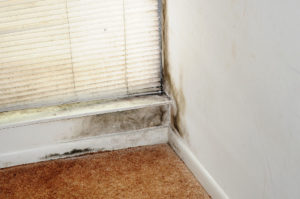-
Mold
is a fungus that releases spores to proliferate. These spores settle on surfaces and are more likely to grow in places that are dark and damp. Mold feeds on bacteria and other micro-organisms that exist on all surfaces.
The spores that are released can be a significant health hazard to humans. In most cases, respiration is affected. On rare occasions, it can be fatal, depending on the type of mold that is present in the home. It is therefore important to prevent mold growth in the first place or take steps to eliminate it as soon as possible.
Health Effects Of Non-Toxic Mold
In general, people who have been exposed to non-toxic mold commonly complain of respiratory problems – blocked or stuffy nose, upper respiratory problems or difficulty breathing, wheezing or tightness in the chest as well as asthma symptoms.
For those who already have a respiratory illness, the effects can be detrimental. Some people will have an allergic reaction to mold which will further increase the severity of the symptoms experienced. Headaches and skin irritation or rash may also be reported, in particular for those who have an allergic reaction to the mold.
Treatment is typically in the form of delivering an antihistamine to the affected person. However, long-term care may be necessary in order to cure the symptoms entirely. Reactions to mold exposure can take place immediately but are more likely to present after prolonged exposure. The longer the exposure to the mold, the more severe the symptoms may be.
Toxic Mold Exposure
Unlike the non-toxic variety, toxic mold releases mycotoxins which are far more hazardous to health than regular spores. Stachybotrys Chartam, also referred to as black mold is most commonly responsible for the symptoms of toxic mold but other types may also be responsible.
Over and above the respiratory problems, headaches and skin irritation explained above for non-toxic mold; mycotoxins may cause neurological issues or mental problems. These can present as confusion, lack of focus, difficulty concentrating, disorientation, mood swings and aggression. In extreme cases, circulatory problems, hallucinations as well as seizure may be the result of toxic mold exposure.
Long-term exposure may also cause problems with fertility and will affect the function of the organs in the body. Affected persons may also feel extremely tired or lethargic and have a lowered immune response. Eye irritation and vision problems have also been reported for both toxic and non-toxic mold exposure.
It is advisable to seek medical attention as soon as possible if any of the above symptoms are present as toxic mold exposure can be fatal. If no symptoms are present but black mold is visible in the home, it is highly recommended to consult with a mold remediation specialist in order to identify and effectively remove the mold.
To prevent mold growth in the home, ensure that surface are clean and hygienic and eliminate excess moisture and dampness.
Health Hazards Associated With Mold In The Home
- Home Mold Removal Health Hazards Associated With Mold In The Home
Call Us Today at (407) 392-0218 for a Free Consultation!
"OUR BUSINESS IS ROOFING & REMODELING
OUR CONCERN IS YOUR WELFARE."
City Roofing and Remodeling
1606 East Central Blvd Orlando, FL 32803
PHONE: (407) 392-0218
cityroofingandremodeling@gmail.comFlorida Roofers License #CCC1330319
Florida General Contractors License #CGC1521712

 is a fungus that releases spores to proliferate. These spores settle on surfaces and are more likely to grow in places that are dark and damp. Mold feeds on bacteria and other micro-organisms that exist on all surfaces.
is a fungus that releases spores to proliferate. These spores settle on surfaces and are more likely to grow in places that are dark and damp. Mold feeds on bacteria and other micro-organisms that exist on all surfaces.